Opening 12/11 - 12/11 - 09/01, 2010
-
Paolo Chiasera
Hybris
The artist creates the exhibition using as a starting point a reflection on the work of British mathematician and philosopher Charles Babbage, the first to plan a programmable brass calculator. Babbage got the inspiration for his calculating device from the loom designed by Joseph Marie Jacquard, adapting the perforated boards used in textile production. Chiasera enhances the creative skidding process that saw Babbage modify the structure used by Jacquard, reconstructing the machine of the English mathematician and transforming it into an instrument for musical amplification. The machine fills the space around it with a nostalgic melody that evokes the sound of a music box, the piece has been composed by Andrea Portera and performed by the pianist Andrea Lucchesini.
Charles Babbage’s failed attempt at building a machine for calculation becomes the starting point for Chiasera’s imaginative process which creates, out of imperfection and error, a fundamental moment for the development of the project on display. Error is a built-in, generative part of the work; the creative process seems to feed continuously off its very own ruins.
It is the imperfection of Babbage’s machine, in the artist’s project, that forms the basis of his poetic drift.
On display the machine is positioned in the second room while in the first room a series of works suggest to the visitor the evolution of the project, highlighting some of fundamental aspects.
At the center of the space we find the La misura dell’errore, a showcase that collects the residues, the errors, and the red herrings that characterized the development of the research. It is a meter of ash produced by the combustion of the discarded plans and a book that documents them with photographs.
On the walls the three works Hybris represent some parts of Babbage’s machine and outline a path of approach to the morphological and structural characteristics of the machinery in function of its conceptual skidding.
On the opposite wall the triptych Approach to Identity underlines three fundamental aspects of the projects development: analogy, implosion and dispersion. The first work suggests the process of analogy, the development of associative thinking that has brought the artist to modify the intended use of Babbage’s machine; in the second work the nuclear explosion that in the course of fifteen photos undergoes a paradoxical process of implosion, the progressive erosion of the image caused by a fixative agent to indicate the limits of technique, the fracture that often opens between idea and practice, between planned ambition and proactive result. Finally the forest evokes dispersion, a disorientation that can cause a momentary loss of course but that often enriches the search for unexpected stimuli.
In the end two small oil on canvas represent two fundamental persons for Charles Babbage: Lady Lovelace, known as the first computer programmer, and the politician Robert Peel. They seem to be melted together in a dense matter, the two faces are hardly distinguishable and they create a sort of strange, disturbing hybrid.
The artist creates the exhibition using as a starting point a reflection on the work of British mathematician and philosopher Charles Babbage, the first to plan a programmable brass calculator. Babbage got the inspiration for his calculating device from the loom designed by Joseph Marie Jacquard, adapting the perforated boards used in textile production. Chiasera enhances the creative skidding process that saw Babbage modify the structure used by Jacquard, reconstructing the machine of the English mathematician and transforming it into an instrument for musical amplification. The machine fills the space around it with a nostalgic melody that evokes the sound of a music box, the piece has been composed by Andrea Portera and performed by the pianist Andrea Lucchesini.
Charles Babbage’s failed attempt at building a machine for calculation becomes the starting point for Chiasera’s imaginative process which creates, out of imperfection and error, a fundamental moment for the development of the project on display. Error is a built-in, generative part of the work; the creative process seems to feed continuously off its very own ruins.
It is the imperfection of Babbage’s machine, in the artist’s project, that forms the basis of his poetic drift.
On display the machine is positioned in the second room while in the first room a series of works suggest to the visitor the evolution of the project, highlighting some of fundamental aspects.
At the center of the space we find the La misura dell’errore, a showcase that collects the residues, the errors, and the red herrings that characterized the development of the research. It is a meter of ash produced by the combustion of the discarded plans and a book that documents them with photographs.
On the walls the three works Hybris represent some parts of Babbage’s machine and outline a path of approach to the morphological and structural characteristics of the machinery in function of its conceptual skidding.
On the opposite wall the triptych Approach to Identity underlines three fundamental aspects of the projects development: analogy, implosion and dispersion. The first work suggests the process of analogy, the development of associative thinking that has brought the artist to modify the intended use of Babbage’s machine; in the second work the nuclear explosion that in the course of fifteen photos undergoes a paradoxical process of implosion, the progressive erosion of the image caused by a fixative agent to indicate the limits of technique, the fracture that often opens between idea and practice, between planned ambition and proactive result. Finally the forest evokes dispersion, a disorientation that can cause a momentary loss of course but that often enriches the search for unexpected stimuli.
In the end two small oil on canvas represent two fundamental persons for Charles Babbage: Lady Lovelace, known as the first computer programmer, and the politician Robert Peel. They seem to be melted together in a dense matter, the two faces are hardly distinguishable and they create a sort of strange, disturbing hybrid.
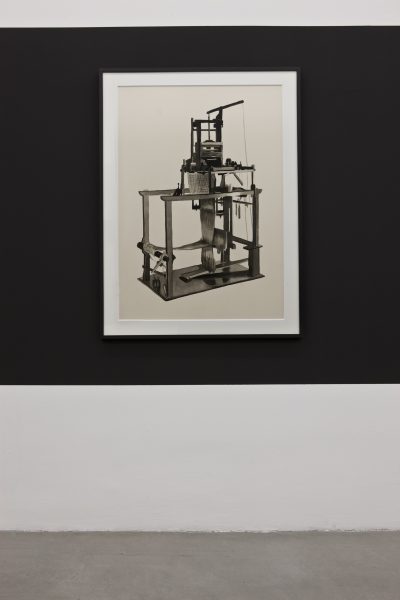 Hybris #1, 2009Ink on paper
Hybris #1, 2009Ink on paper
112×83,5 cm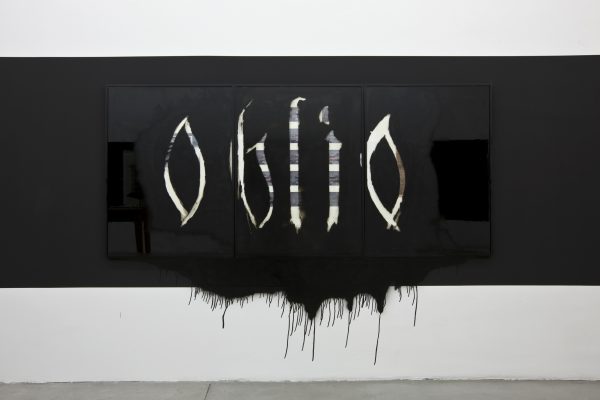 Approach to Identity, 2009Mixed media
Approach to Identity, 2009Mixed media
100×210 cm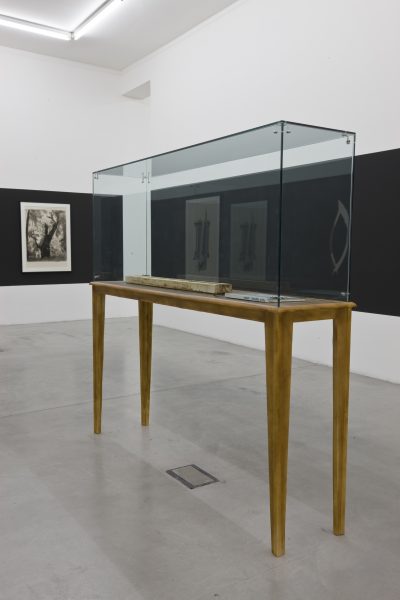 Misura dell’Errore, 2009Glass, wood, notebook, ashes
Misura dell’Errore, 2009Glass, wood, notebook, ashes
171×184×44,5 cm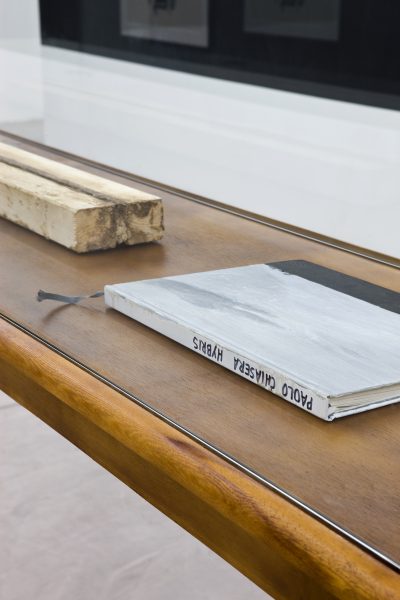 Misura dell’Errore, 2009, detailGlass, wood, notebook, ashes
Misura dell’Errore, 2009, detailGlass, wood, notebook, ashes
171×184×44,5 cm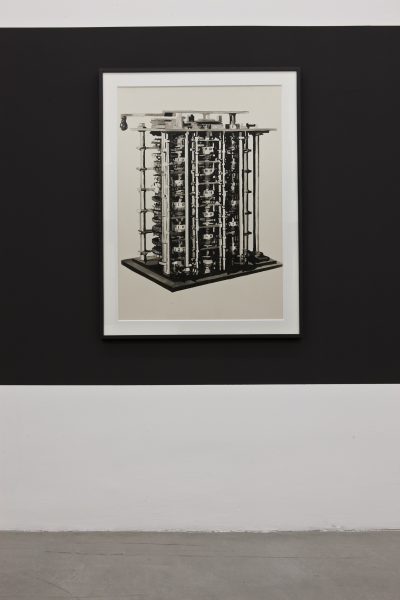 Hybris #2, 2009Ink on paper
Hybris #2, 2009Ink on paper
112×83,5 cm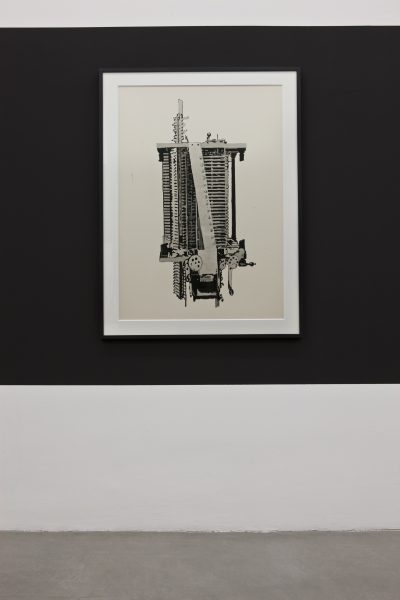 Hybris #3, 2009Ink on paper
Hybris #3, 2009Ink on paper
112×83,5 cm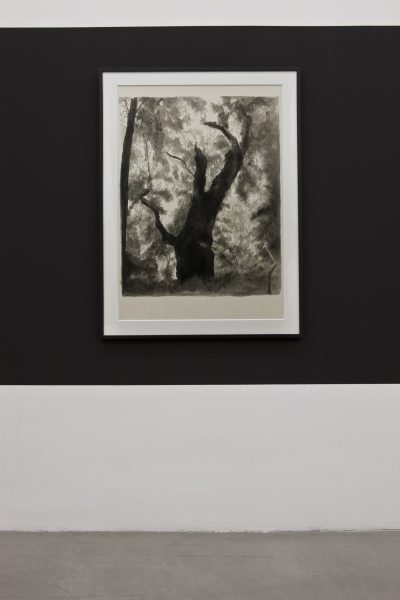 Hybris #4, 2009Ink on paper
Hybris #4, 2009Ink on paper
112×83,5 cm






















